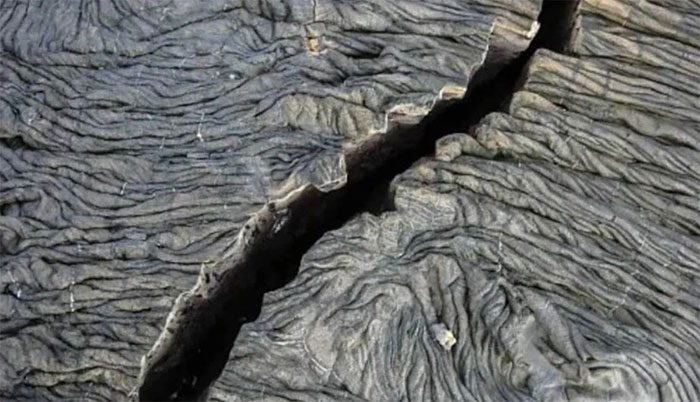The latest research has identified new points where the Pacific Plate is fracturing and being pulled down into the mantle.
The Earth’s outer crust is divided into dozens of tectonic plates, with one main plate—the Pacific Plate—experiencing fractures and separations.
According to NDTV, researchers from the University of Toronto, Canada, have discovered new separation points within the Pacific Plate and are clarifying this centuries-old tectonic plate model.

The Pacific Plate is the largest tectonic plate on Earth and is fracturing – (Photo: NDTV).
The research team found that the Pacific Plate is fracturing due to immense forces acting beneath the seabed, pulling it apart. The study was published in the journal Geophysical Research Letters.
The Pacific Plate is the largest tectonic plate, forming much of the ocean floor of the Pacific, stretching along the western coast of North America all the way to Alaska.
On the western edge, the Pacific Plate extends from Japan to New Zealand and Australia, where it is fracturing and separating from the larger plate.
These fractures beneath the sea are hundreds of kilometers long and thousands of meters deep.
This plate forms a significant part of the Pacific Ring of Fire.
Erkan Gun, a postdoctoral researcher in the Earth Sciences department at the University of California, USA, stated: “We know that geological deformations like fractures occur within continental plates far from the plate boundaries. But we didn’t know that the same thing happens with oceanic plates.”
According to Gun’s explanation, it has long been believed that oceanic plateaus are thicker and therefore stronger, making them less prone to fracturing. However, models and seismic data suggest the opposite: oceanic plateaus are weaker.
To announce the new discovery, the team studied four oceanic plateaus in the western Pacific—Ontong Java, Shatsky, Hess, and Manihiki—within a vast area bordered by Hawaii, Japan, New Zealand, and Australia. The data were then input into a supercomputer for comparison with information collected in studies conducted in the 1970s and 1980s.
Russell Pysklywec, a professor in the Earth Sciences department at the University of Toronto, further explained: “What we are doing is refining our understanding of plate tectonics—the theory that describes how our planet works—and showing that these plates are not as pristine as we previously thought.”
This new discovery has overturned what scientists previously understood about the Earth. There remain fundamental mysteries about the Earth’s ongoing processes.


















































